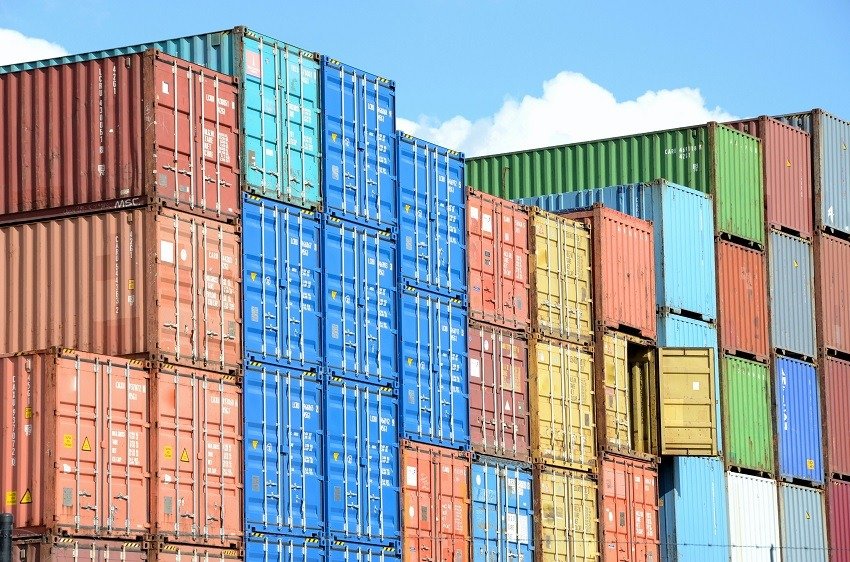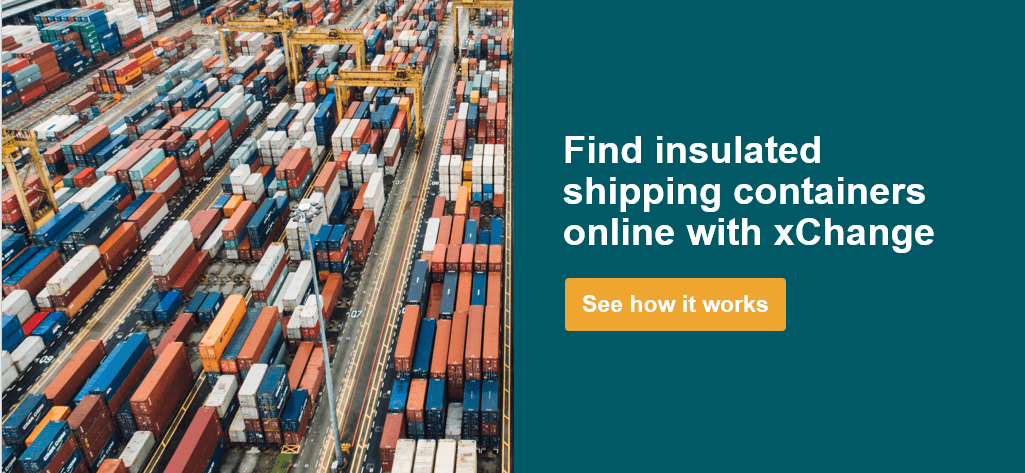Considering investing in an insulated shipping container? Learn all about the pros and cons of these containers, and how they differ from reefers.
Every year, more than 200 million containers are shipped all over the world that contains durable and non-durable goods. Not all products are resistant to external conditions in long-distant journeys. Sensitive goods, such as food, need specialized containers to avoid them rotting or being spoiled. Insulated containers offer the required conditions and protection to ship these products without breaking the cold chain.
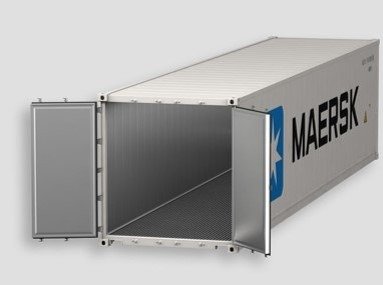
What is an insulated shipping container?
Standard shipping containers can’t meet the requirements of the cold chain during the shipping process. Something that’s important for temperature-sensitive products. Non-durable goods like food, medicine, or chemicals need a stable environment to prevent them from spoiling or rotting. Different goods require different conditions to ensure their quality. Therefore, they can’t be stored in the same container. The container surroundings have to adapt to temperature, humidity, and external conditions.
A non-operational refrigerated container also called an insulated shipping container, is used for this purpose.
The thin metallic wall of a standard dry container is exposed to external climate. It can’t keep a constant internal temperature. On the other hand, insulated containers prevent damage due to temperature fluctuation during hauling. They also minimize condensation provoked by rainwater or moisture finding its way inside the container.
An insulated shipping container often has a double wall. This is vacuumed to prevent heat and cold transfer between the interior and exterior. The interior is fully sealed to avoid condensation and moisture. However, there are different types of insulated containers depending on the type of goods that the container transports. They are:
Different insulated container types
Regular Ice Totes
Used overall by food processors, seafood processors, and wineries to ship their goods. This type of insulated shipping container provides excellent temperature control due to the foam-filled double wall.
Dry Ice Totes
This type of insulated container is made of compounded-melt blend low-density polyethylene plastic. It is ideal for transporting frozen products such as dry ice and ice cream for a short shipping journey. This type also has significant impact resistance.
Specialty
This type of container is ideal for onboard handling, defrosting, or chilling applications. It’s designed to use onboard vessels. For instance to sort, grade, and store seafood and reduce the thawing time by half.
Merchandise/Display
Used to transport fresh goods to markets, supermarkets, or vendor shows. They are portable and keep food and beverages cold without using a mechanical refrigeration system.
Why are insulated shipping containers needed?
Insulated containers are used in different sectors when it comes to the transportation of sensitive non-durable goods. The most significant task is to ensure that the cold chain doesn’t break. The insulated container can be used to:
- Ship fresh products and keep up their freshness
- Transport medicines and drugs
- Forestall the development of microorganisms
- Ensure long durability of storage (long-term storage)
- Transporting goods with the need for low temperature for a short distance
- Transport goods without an accessible power source
- Ensure a standard temperature when no refrigeration is needed
- Prevent abrupt temperature changes
_____________________________
Are you looking for containers? Container xChange makes it easy for you to source containers. On our online platform, you get access to liners, leasing companies, and container owners, who have containers in more than 2500 places worldwide.
Interested in buying a single container? Check out our basic trading membership ideal for one-time buyers.
Working with selling and buying containers? And want to see if the platform has the containers, you’re looking for? Schedule a demo below.
 ______________________________________________
______________________________________________
The difference between reefers and insulated containers
The difference between the two container types is simple. A reefer has a motor and needs a power source like a generator on the vessel. A non-refrigerated container, on the other hand, relies on the same properties as a reefer. It is a large insulated box that maintains a steady temperature but without an active refrigerating system.
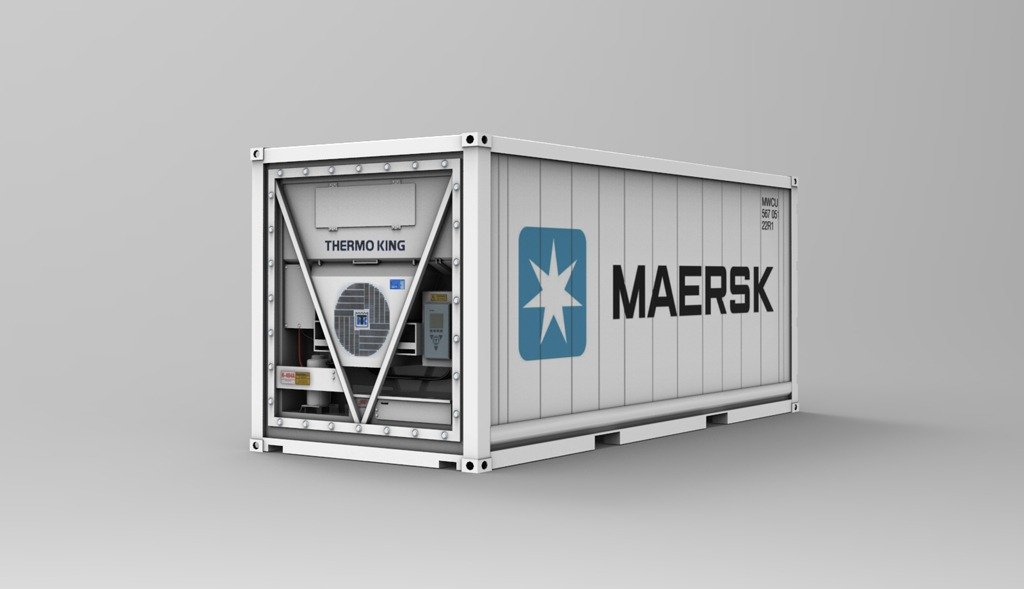
A difference between reefer containers and insulated containers is the cooling system that reefer containers have.
When choosing between a reefer and an insulated container, it is essential to be aware of the shipped products’ needs. A reefer provides precise temperature control inside the container. An insulated container just maintains the initial temperature and protects the interior from exterior conditions. Reefers are used for climate-controlled storage and keep goods cold, frozen, or at a specific temperature during long-distance shipping. Insulated containers are often used in the retail market.
A clear example of using a reefer is when seafood gets shipped from South India to Europe. It is crucial to maintain the cold chain of this frozen and very sensitive product during the whole journey. A specific temperature is needed to keep the seafood frozen and not spoil or contaminate it due to defrosting. The temperature unit maintains the same condition during the whole journey.
When it comes to shipping products with longer shelf lives, like onions or potatoes, insulated containers are enough. It protects the goods from external weather conditions and maintains a cool temperature during the journey. There is no need for a specific temperature.
How to insulate a shipping container
Insulating a standard container for shipping purposes is a very complicated procedure. The most cost-effective and hassle-free way to ship sensitive goods is to purchase directly a specialized insulated container.
There are different options to insulate a standard container:
Two-layer walls
The container wall needs to be covered by a two-layer wall. This is vacuumed to prevent the transfer of heat between the exterior and interior.
Additional internal layer
An additional layer is fitted over a timber frame. The layer is fully sealed to ensure that the interior stays condensation-free.
Lined up container walls
The container walls are lined up with liners (a particular structure built into the walls). Thermal blankets with multiple layers are also used.
Gas-filled chambers
A gas-filled chamber around the whole container can seal in the heat and maintain a constant temperature inside.
To add such a structure to a standard container, it is recommended to consult a professional agency. This is especially true if the container’s purpose is to ship sensitive goods. Insulation on a smaller scale can be manually done by using thermal blankets around individual pallets. Smaller boxes with gas-filled chambers can also be placed inside the container. Bubble wrap is also an effective solution for lower insulation or temperature control.
The insulation of a standard container for homely purposes is much easier. This can be done manually using rigid foam, spray foam, or rigid mineral wool.
Cooling and other features
There are different options to create the right temperature in the insulated container depending on the type of goods inside.
The easiest option is to use blocks of ice or artificial slurry ice to lower the initial temperature. Slurry ice is microcrystal suspended in water with a decreased freezing point and an efficiency of 70%. Dry ice is a solid carbon dioxide and another good option for artificial cooling. It leaves no residue but is toxic in large concentrations. Therefore, it can only be used under specific conditions. Chemical Phase Changing Material (PCMs) is often used to set the initial temperature in the container. It absorbs the heat and lowers the temperature. Usually, it’s solid but can be liquid as well. It also exists as a gel for a specific temperature range.
To prevent the goods from becoming stale and spoiled, air filters in the container improve air circulation. Nitrogen is often pumped into the container for the same purpose. A temperature sensor should always monitor heat fluctuations and be regularly checked.
Challenges with insulated shipping containers
The biggest problem when it comes to shipping sensitive goods is maintaining the cold chain. The material used for insulation and protection, such as waste materials, by-products, packing materials, and coolants, often can’t be recycled. They end up in landfills and incineration sites where the toxic chemicals are causing damage to the environment. More and more trials are made to produce recyclable packing material and coolants for proper disposal. As well as to release them back into the air.
Different goods like medicine, chemicals, and food depend on insulated containers. They need to be protected from contamination and external weather conditions during the shipping route. Insulated containers, therefore, play a vital role in the supply chain. But how do you find these containers?
Buy insulated shipping containers on xChange
Container xChange is the first neutral online marketplace that offers 10,000 containers globally. You’ll find companies and containers in more than 2,500 locations worldwide.
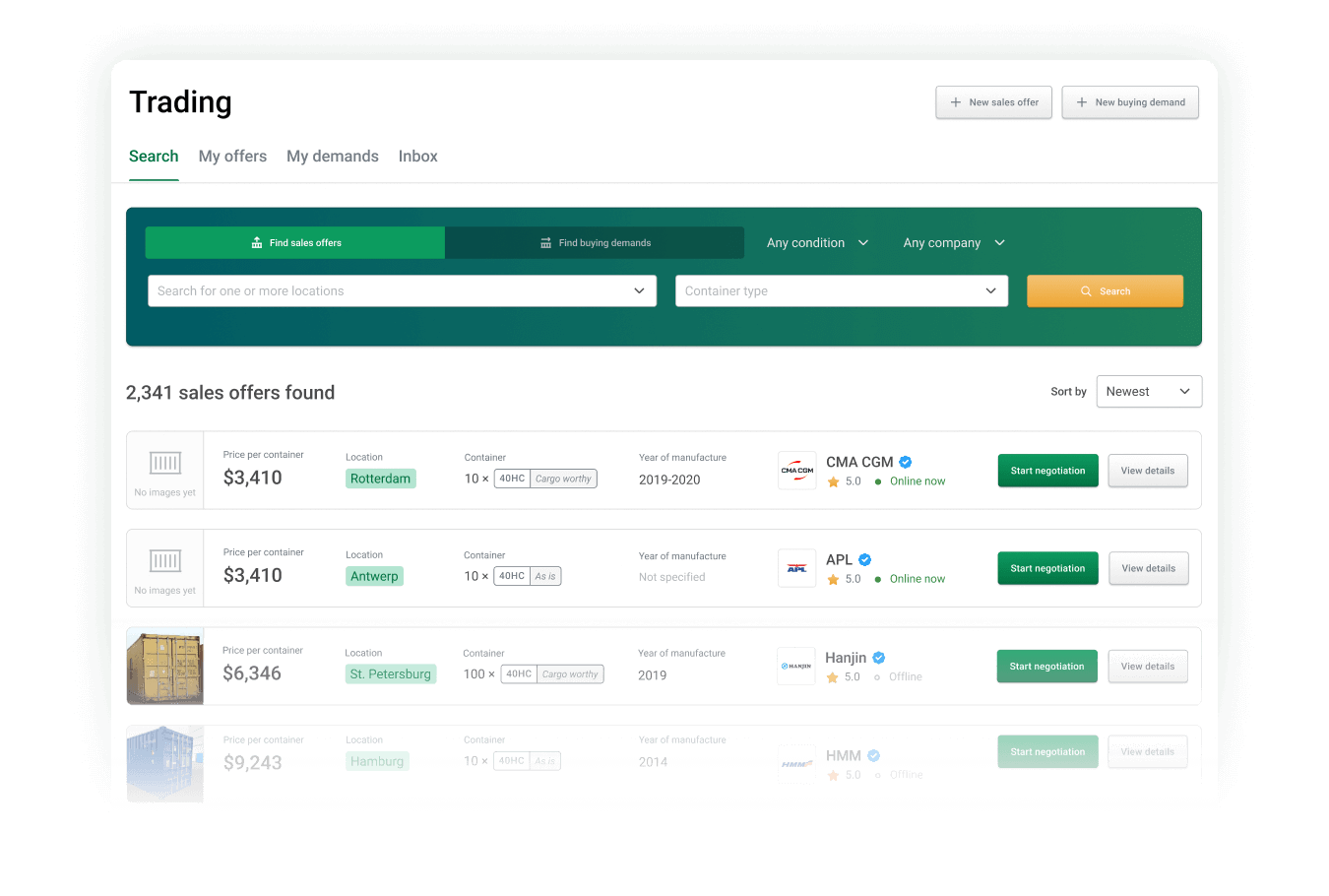
If you’re interested in buying a single, then have a look at our basic trading membership. It’s ideal for one-time buyers.
Is container buying and selling a part of your business? We’ve got a solution that will help you increase profits – you don’t want to miss it!
Get top container prices with xChange
At Container xChange, we want to make it a little easier for you. For just US$190 per month, you get unlimited access to the platform and its 1,500+ members. And as a Professional Member of the trading platform, you can enjoy:
- Risk-free deals with vetted partners
- 100% secure transactions
- Knowing the market cost and getting a better price on containers
- Choose between 10,000 boxes and make unlimited deals
All members of the trading marketplace have been vetted by the xChange team. Making sure that you only deal with reliable partners. Still unsure of who you should do business with? Check out their public profile! All xChange members have a public profile on the platform. There, you can find peer reviews from previous partners, and see how the company has been rated. Letting you decide who you want to make your next deal with!
We also protect you as a buyer – we ensure all your payments are safe and that your operations run smoothly!
Additionally, the marketplace is 100% transparent. This means that you know exactly who you’re doing business with – and you can even make deals with industry giants such as Trident, SeaCo Global, and SeaCube. It doesn’t matter who you partner up with, because all deals are commission free.
Do you need a container type that you can’t find in your current sourcing channels? Don’t worry. With over 10,000 containers located across 2,500+ unique locations, Container xChange makes it easy for you to find the containers you need. You can also activate the market scanner and get notified about new offers that fit your needs.
Just click the banner below and schedule a call with our expert team. We’ll show you the platform in action and help you find the containers you’re looking for.


